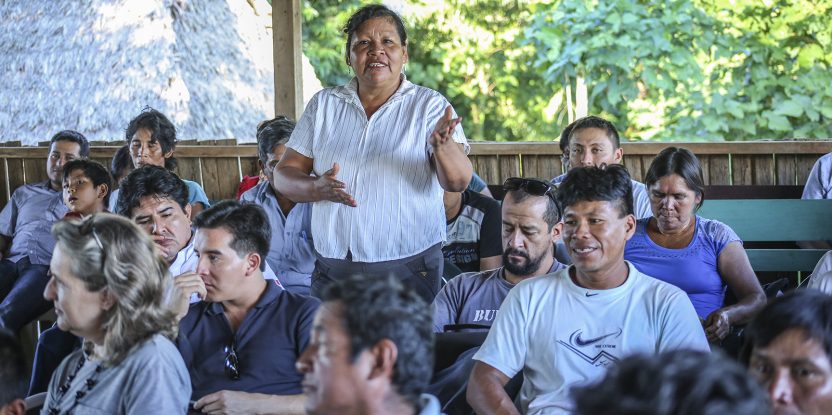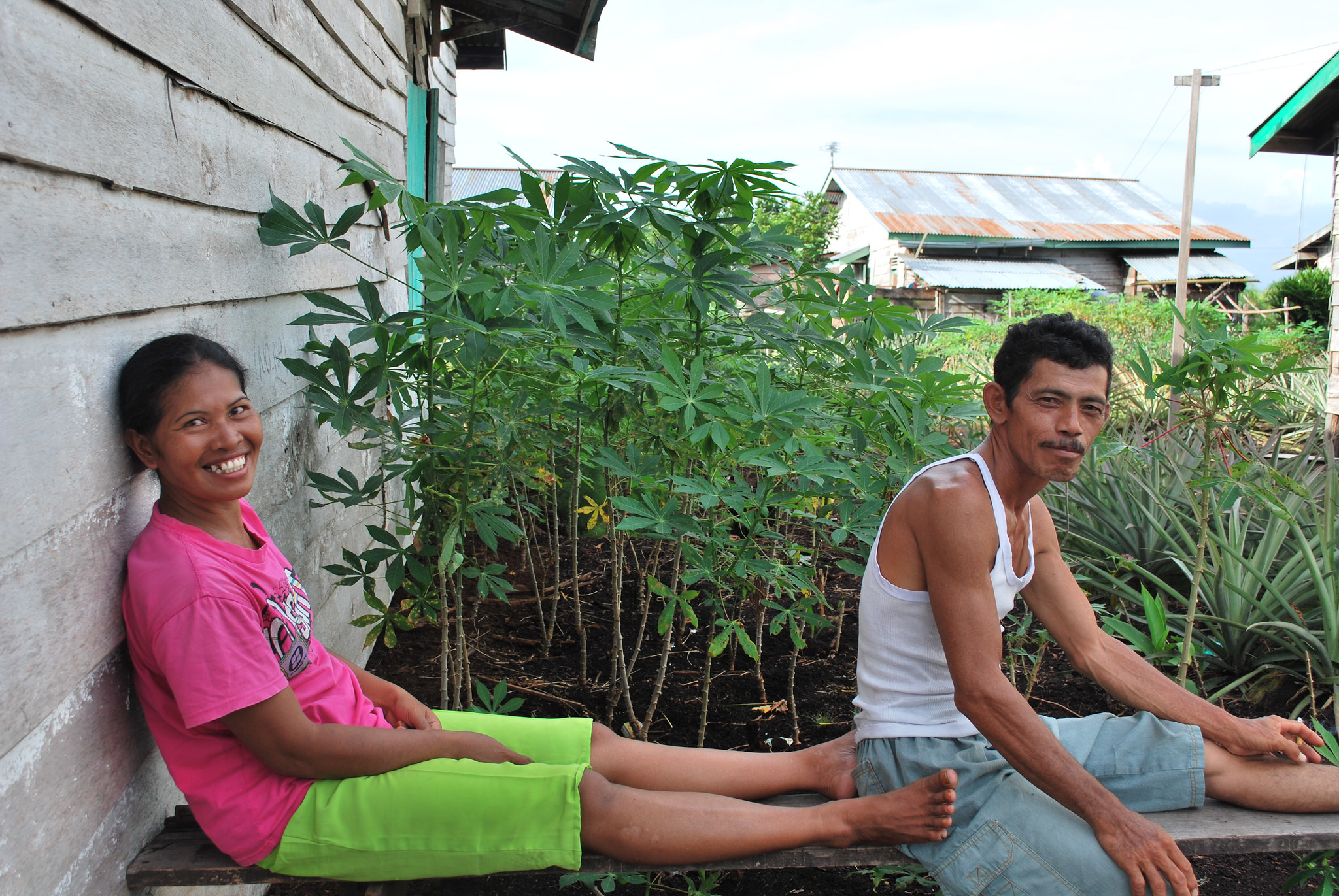What are the biggest obstacles that local communities face when ensuring rights to their forest resources?
Community leaders say it’s the red tape and the cost of travel from rural villages to the towns where government offices are located. They also see poor-quality education and health care as additional hurdles that make it more difficult for communities to organize.
Meanwhile, government officials note other obstacles, such as a shortage of staff or the difficulty of traveling to remote villages.
Because these groups do not often engage in dialogue, problems can persist and forest-tenure reforms can stall.
To remedy the situation, researchers from the Center for International Forestry Research (CIFOR) recently brought community leaders, government officials and technical experts together for workshops in Peru, Uganda and Indonesia to explore possible solutions.
The workshops, which were part of CIFOR’s Global Comparative Study on Forest Tenure Reform, used a method called Participatory Prospective Analysis (PPA) to identify factors affecting forest-tenure reform and design scenarios that could lead to better policies.
“This is an innovative approach to discussing tenure problems,” said Iliana Monterroso, coordinator of the study in Peru. “It combines the knowledge of stakeholders, who include technical experts and decision makers, with the knowledge of people from the communities.”
The process begins with a workshop in which participants identify the social, technical, economic, political and environmental factors that affect the process of securing land tenure.
This information is entered into a computer program by the researchers, and participants use the results to examine how those factors influence each other directly and indirectly. After eliminating factors that they cannot control, they choose about five that they agree are most important. They then envision different scenarios to explore how land-tenure policy could change, depending on those factors and the actions that they and their organizations take.
The PPA process is complex, but worthwhile, says CIFOR researcher Nining Liswanti. “The first challenge is identifying the stakeholders, because you don’t know the people and their skills,” she said. “The process itself takes time, given the amount of discussions and brainstorming. And people have to listen to each other, so you don’t want people who are too dominating.”
"Participatory Prospective Analysis (PPA) is an innovative approach to discussing tenure problems. It combines the knowledge of stakeholders, who include technical experts and decision makers, with the knowledge of people from the communities."
THE INDONESIAN CASE
In Indonesia, the workshops included community leaders, officials from government forest, land and water agencies, and representatives from the private sector, non-governmental organizations and universities.
The goal was to design scenarios for implementing forest-tenure reforms on the densely populated island of Maluku, where no reforms have taken place, and for improving the livelihoods of people who depend on forests in the district of Lampung, on the southern tip of Sumatra, where most people are migrants and reforms are already under way.
The participants outlined possible future scenarios that ranged from the ideal—in which all stakeholders would make some concessions—to others in which the government or private interests had more power.
“Discussing these scenarios help people think about strategies for avoiding outcomes that would not be as positive,” said Liswanti.
Participants all considered the government’s willingness to support forest-tenure reform as crucial for positive scenarios. Enforcement of forest regulations, community participation in forest management and respect for local cultures were also mentioned frequently.
THE UGANDAN CASE
Additional success factors depend on local circumstances.
In the western district of Kibaale, Uganda, immigration has swelled the number of people who depend on forest resources. This creates uncertainties about tenure and rights, which are further complicated by absentee landholders.
Masindi, also located in western Uganda, is marked by the destruction of forests for corporate farms and ranches, as well as the imminent possibility of oil production, which could harm forests, but which could also create better-paying jobs that might reduce people’s dependence on forests.
The Ugandan participants envisioned scenarios in which the government made and enforced clear rules for immigration and resettlement, budgeted for forest management and provided enough personnel to enforce regulations, while traditional community leaders received training in sustainable forest management.
THE PERUVIAN CASE
In Peru, the analysis was done with government officials and representatives of non-governmental organizations and leaders of communities scattered along rivers in the Amazonian regions of Loreto and Madre de Dios.
One persistent obstacle for the indigenous communities is that that they are not free to make decisions about forest use, because forests are considered a public good, governed by national laws as well as regional regulations. This makes building local and regional scenarios difficult, because they are still subject to the limitations imposed by national laws, according to researcher Alejandra Zamora, who is leading the application of the methodology in Peru.
Tensions also arise over overlapping land rights. Community leaders said they felt regional governments lacked the will to resolve tenure problems, while government officials said they were limited by budget constraints.
The global PPA workshops enable participants to envision concrete ways of addressing the complexities involved in forest-tenure reform. By identifying potential pitfalls, including obstacles to reform and implementation of actions, they can design strategies for mitigating negative factors.
“These discussions help participants arrive at implementation processes that are more effective at improving tenure rights and resource access, as well as identifying who should be responsible for these actions,” said Monterroso.
“The participants discover that there is not only one possible scenario, but rather various potential futures. This helps them develop strategies to bring about the scenario they would most like to achieve.”
Further discussion will continue in these three countries in an effort to bring about changes in policy and practices necessary for moving toward desirable forest-tenure scenarios.
We want you to share Forests News content, which is licensed under Creative Commons Attribution-NonCommercial-ShareAlike 4.0 International (CC BY-NC-SA 4.0). This means you are free to redistribute our material for non-commercial purposes. All we ask is that you give Forests News appropriate credit and link to the original Forests News content, indicate if changes were made, and distribute your contributions under the same Creative Commons license. You must notify Forests News if you repost, reprint or reuse our materials by contacting forestsnews@cifor-icraf.org.

